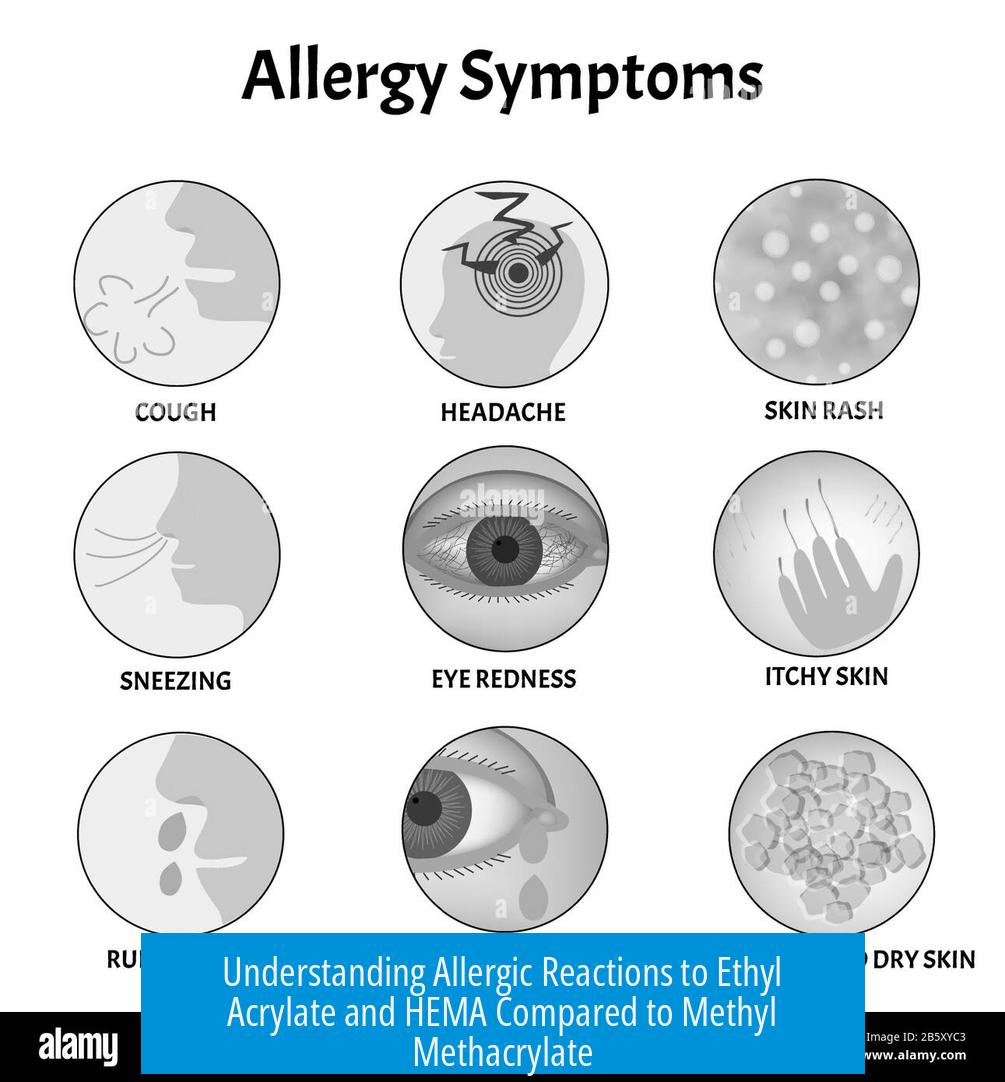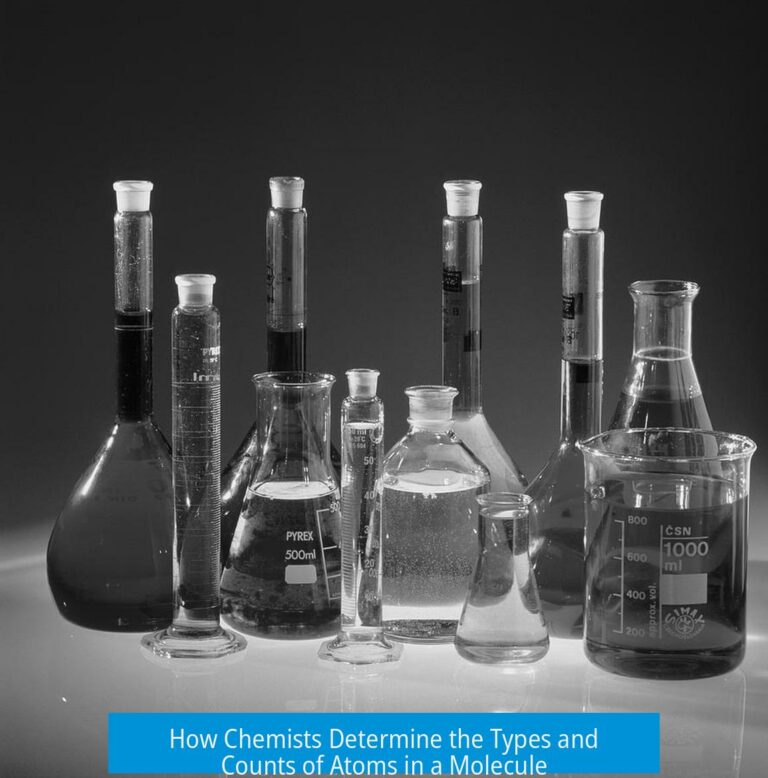Understanding Allergies to Ethyl Acrylate, HEMA, and Methyl Methacrylate
You can be allergic to ethyl acrylate and 2-hydroxyethyl methacrylate (HEMA) but not to methyl methacrylate (MMA) due to differences in chemical structure, skin sensitization pathways, contamination in HEMA, exposure frequency, and individual immune responses.
1. Chemical Structure and Immune Recognition
Allergic reactions depend on how the immune system recognizes chemicals. Ethyl acrylate, HEMA, and methyl methacrylate have similar but not identical structures. Small differences, like an extra methyl group in MMA, change their three-dimensional shape.
- Antibodies may detect these molecules differently due to size and shape variations.
- The extra methyl group in MMA impacts chemical reactivity and immune recognition.
- Individuals may have immune systems that respond specifically to certain molecular configurations.
This means the immune system might react to ethyl acrylate and HEMA but ignore MMA. Such selective recognition explains why allergy patterns vary between these related chemicals.
1.1 Structural Comparison
| Chemical | Key Structural Features | Impact on Allergy |
|---|---|---|
| Ethyl Acrylate | Acrylate group with ethyl side chain | Recognized by antibodies inducing skin allergies |
| HEMA | Methacrylate group plus 2-hydroxyethyl chain | Composite of acrylate and methacrylate features, triggers allergies if sensitive to either component |
| Methyl Methacrylate | Methacrylate group with methyl side chain | Different enough in shape to often avoid triggering immune response in some individuals |
2. HEMA: A Composite Chemical and Its Allergic Potential
HEMA is chemically related to both ethyl acrylate and methacrylates. This means allergies to either of these can manifest as an allergy to HEMA.
- HEMA contains the methacrylate functional group plus a hydroxyethyl side chain derived from ethyl acrylate.
- This dual nature causes cross-reactivity in some allergic individuals.
2.1 Methacrylic Acid Contamination in HEMA
Commercial HEMA often contains about 2% methacrylic acid impurity. This acid is a known irritant causing skin inflammation and allergic-like reactions.
- Methacrylic acid causes redness, itching, and chronic skin damage.
- Such contamination can explain some allergic responses attributed to HEMA exposure.
Thus, when a person shows allergy signs after HEMA contact, it may partly stem from this impurity rather than HEMA itself.
3. Skin Sensitization and Individual Response Variability
The skin’s reaction to chemicals involves complex pathways. Each person’s immune system may respond differently even to structurally similar substances.
- Skin sensitization involves antigen presentation, T-cell activation, and antibody production.
- Minor structural differences in chemicals can alter receptor binding and immune activation.
- Not all individuals develop allergies to all similar compounds; variability is inherent.
This complexity means someone can react strongly to ethyl acrylate and HEMA but tolerate MMA perfectly.
4. Exposure Frequency and Product Use Patterns
Allergic sensitization requires repeated or prolonged exposures. Ethyl acrylate and HEMA appear frequently in products like UV-curing nail polishes, adhesives, and coatings.
- Higher exposure increases allergy risk to these chemicals.
- Methyl methacrylate is less common in some personal care products, reducing sensitization likelihood.
- Residual free monomers in polymer products can trigger allergic responses.
Thus, ubiquity and exposure frequency may cause allergies to develop against ethyl acrylate and HEMA but not methyl methacrylate.
5. Reported Cases Illustrate Allergy Differences
Clinical and personal reports confirm this selective allergic phenomenon.
- Patients diagnosed with ethyl acrylate and HEMA allergies often show no reaction to MMA.
- Some individuals express frustration over inconsistent medical advice since allergologic profiles may not be widely understood.
- Others report allergies to HEMA and similar compounds but tolerate MMA, highlighting immune specificity.
These experiences emphasize the nuanced interplay of chemistry and immunology in allergy development.
6. Managing Allergies to These Chemicals
Effective allergy management depends on accurate diagnosis and minimizing exposure.
- Consult allergists or dermatologists experienced with chemical allergies.
- Undergo patch testing to identify specific sensitizers among acrylates and methacrylates.
- Use product ingredient lists or apps like SkinSafe to verify safety before use.
- Seek nail polishes and related products certified free of offending acrylate compounds.
- Inform healthcare providers about all diagnosed allergies for tailored advice.
Key Takeaways
- Chemical structure differences, like the extra methyl group in MMA, affect immune recognition and allergy development.
- HEMA combines characteristics of ethyl acrylate and methacrylates; allergies can cross-react accordingly.
- Methacrylic acid contamination in HEMA may worsen allergic reactions through skin irritation.
- Exposure frequency to ethyl acrylate and HEMA in consumer products makes allergy more likely versus MMA.
- Individual immune responses to these chemicals are complex and vary widely.
- Consultation with specialists and using dedicated tools can aid in managing and avoiding these allergies.





Leave a Comment